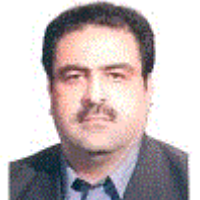Land suitability assessment and hospital waste management using quantitative methods Case study: Kerman city
Nowadays, the problems of solid waste, which is the natural output of human daily activities, have become one of the most important issues. The amount of solid waste generated has increased significantly over the past three decades, and the characteristics of the waste have changed due to changes in people's lifestyles, developments in the environmental industry, and significant population growth. In many developing countries, inappropriate management of hospital and health care waste has direct adverse effects on community health and the environment. Solid and hospital wastes are mixed and complex subjects and at the same time critical for cities. It is predicted that waste production will increase from 1.3 billion tons per year to 2.2 billion tons by 2020. As a result, many cities in developing countries face many problems in landfill management. The city of Kerman, like other cities in the third world, has experienced population growth in different periods of time and this growth and development of urban planning in most developing countries has become an uncontrollable process. Hospital waste disposal machines in Kerman are operating with limited capacity and identifying a suitable location for the establishment of the main hospital waste disposal center of medical, medical and laboratory centers seems necessary. The main purpose of this research is to find the safest place and the most efficient scenario for disposing of hospital waste in Kerman.
In this research, information has collected through library, field studies and descriptive-analytical methods. Scope of the study is the political border of Kerman city. In the first step, the most effective criteria and data identified; Data related to communication routes, waterways, rural urban areas have removed from the 1: 25000 topographic map as the main research tool. The slope layer also has extracted from the Aluss-Palsar. The geological layer extracted from the 1: 100000 scale geological map. Land use maps and protected areas extracted from Landsat 2020 satellite imagery. After classifying the available indicators, valuable questionnaires 1 to 9 provided to experts to prioritize the indicators. At this stage, each layer evaluated and prepared based on how it affects the determination of suitable land for sanitary burial. Then, using GIS software and AHP-Fuzzy model, the optimal location was determined to determine the landfill of hospital waste in Kerman. In order to evaluate the scenarios of hospital waste management in Kerman, Fuzzy- RIAM method used. In the fuzzy Riam method,first the activities of each project are identified and then their effects on each of the environmental components, including physical / chemical, biological / ecological, social / cultural, economic / technical parameters, are determined.
In the AHP model, the slope criterion with a score of 0.218 has the highest weight among the studied indicators, followed by lithology and distance from the waterway. The location of landfills due to issues such as water pollution, air pollution, pests, dust, fire, traffic and noise, as well as the economic cost of the surrounding areas cause dissatisfaction of urban and rural residents. Accordingly, in the distance index from the city, the distance of 35-45 km has gained the most weight. The most desirable distance for rural areas according to the obtained weights is 5-10 km. According to Figure 10, the density of villages in the western and southwestern parts of the city has reached a maximum. Waterways and rivers are very sensitive to the entry of pollutants into their systems. According to the results, the distance from the waterways should be at least 3 km. Figure 12 shows the distance of waterways at the city level. The Protected Area is located in the southwest of the region, which is of great ecological importance. According to the results, the most appropriate distance from protected areas is more than 4 km. Among all the land uses in Kerman city, the highest weight related to barren lands and then poor pastures. The most unsuitable places for landfilling are located in the western and southern parts of the region, which mainly include agriculture and orchards. The most suitable slope for landfilling is less than 5 degrees and the aftermath is 5 to 10 degrees. Geologically, in the city of Kerman, the western and northwestern parts are in an unfavorable situation, because these parts are the location of young bed alluvium and alluvial fans, which provide agricultural land. The density of the fault in the western part of the region and parallel to the eastern heights of Kerman has made this area unsuitable for locating landfills. According to the criteria studied in this study, waste landfills are located more than 35 km from the city of Kerman and more than 5 km from the surrounding villages. In the study area, suitable places for disposal of hospital waste cover an area of about 17,000 square kilometers, which covers 37% of the area. Evaluation of waste management scenarios showed that plasma method in hospital waste management has the least negative environmental impact in terms of physical-chemical components and in terms of biological-ecological components and the most negative effect in terms of economic-technical components is related to plasma.
The results of the AHP-Fuzzy model showed that the most unsuitable places for landfilling of hospital waste in Kerman city for reasons such as location on permeable formations, proximity to fault lines, high groundwater level, proximity to protected areas and proximity to residential centers in the western parts of the region and the central part of the region is studied. In case of financing the plasma method, this method recommended for hospital waste management in Kerman. The least negative effect in terms of economic-technical (operational) components related to the landfill.
- حق عضویت دریافتی صرف حمایت از نشریات عضو و نگهداری، تکمیل و توسعه مگیران میشود.
- پرداخت حق اشتراک و دانلود مقالات اجازه بازنشر آن در سایر رسانههای چاپی و دیجیتال را به کاربر نمیدهد.


